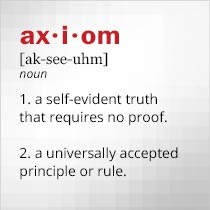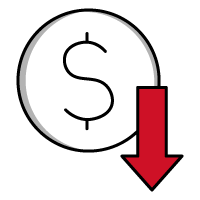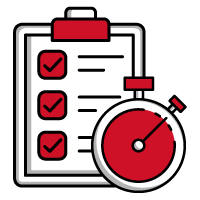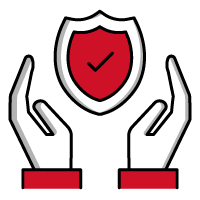Finding The Right Oscilloscope For Your Next IoT Measurement
February 05, 2019
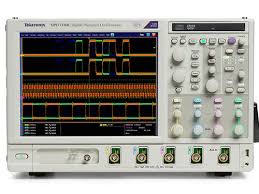 |
As much as the Internet has become as part of daily lives and businesses, the Internet of Things (IoT) and billions of tiny electronic devices will soon provide the means to quickly identify an unlimited number of associated things at home, in businesses, even for personal health. The oscilloscope, with its measurement flexibility and versatility, will be an important tool in helping to design and maintain the many low-power IoT sensors that will be needed in the future. Of course, all oscilloscopes are different, and knowing which measurement capabilities are needed for characterizing IoT devices can simplify the task of finding an oscilloscope with the hardware and software best suited for evaluating IoT sensors.
IoT devices are small, typically battery-powered devices that identify someone or something by means of access to the Internet, usually by means of a cellular communications network or a wireless standard, such as Bluetooth or Wi-Fi radio connection to the Internet. In a factory, for example, where IoT devices are coming to be known as Industrial Internet of Things (IIoT) sensors, these wireless connections can provide a quick look at inventory, with each IIoT device identifying a different stored item that can be checked and updated at any time with a computer having a wireless link and Internet access. IoT devices have already become widespread as part of wearable person health equipment, such as fitness trackers, that use the Internet access to keep track of heart rate, steps, calories burned and amount / quality of sleep as well as alert the wearer with notifications like calls, texts, and calendar appointments.
This is just a sample of the growing number of IoT applications, with measurement tools such as the oscilloscope needed to design, check, and maintain them. Many measurements are essential to characterizing an IoT for successful deployment. One of the most important tests for any IoT device, and where a high-speed oscilloscope can be most useful, is in evaluating the device’s power consumption. Most IoT devices will be attached to inventory or a personal item and they will remain in a sleep or standby mode drawing mere nanoamperes of current waiting to be triggered by a wireless signal, at which point the current consumption will jump typically into the milliampere range to enable the IoT device to communicate with a wireless portal. A properly equipped oscilloscope must be capable of monitoring the extremely low current draw in standby mode (typically with an additional current probe), the much higher current draw during communications, and the very fast transient shift from low-current to higher-current states.
Additional Measurements
Another IoT measurement has been referred to as the “interference of things” because of the expected large number of IoT devices that will be operating within small areas, such as for inventory in warehouses. In such applications, IoT devices must coexist and function closely together and meet electromagnetic-compatibility (EMC) requirements lest the transmissions from one IoT turn into jamming signals for nearby IoT devices.
IoT devices are typically mixed-signal integrated circuits (ICs) that will require different measurements before a design is ready for production, from basic wireless-standard validation (such as how well an IoT device responds to a Bluetooth interconnection) to the characterization of individual components, such as antennas and power amplifiers (PAs) as part of a larger RF power analysis of an IoT device. Because some IoT devices may provide advanced communications capabilities, serial communications testing, such as checking and verifying serial communications timing and data integrity, may also be part of a full set of IoT design and production-line test routines.
Ideally, a full test laboratory is available at the design stage to characterize an IoT device as a full system as well as a group of integrated components, such as antennas, for performance quality. If one instrument is needed to start the evaluation, the versatility of a digital sampling oscilloscope (DSO) can provide much insight into the performance of an IoT design and how well it might perform under actual operating conditions, such as battery life, wireless standards compatibility, and EMC precompliance testing. But what type of DSO performance is needed to conduct these types of IoT measurements? While no single set of oscilloscope (and probe) specifications define the optimum test requirements for an IoT device, especially considering how many different cellular radio and wireless communications standards will be used for different IoT devices, in general, a suitable oscilloscope should provide a wide bandwidth (such as 1 GHz), fast sampling rate, fast rise/fall times, and wide dynamic range to capture the range of current, voltage, and data waveforms that will typify IoT operation.
Sampling Some Scopes
For example, mixed-signal oscilloscopes (MSOs) in the Tektronix MSO5204B series provides users with choices of bandwidth from 350 MHz to as high as 2 GHz, with two or four measurement channels. They feature real-time sampling rates to 10 GSamples/s when two measurement channels are used, with a sampling rate of 5 GSamples/s when four channels are used. The instruments can handle 16 logic channels, for checking data communications between IoT sensors in machine-to-machine (M2M) IoT applications. The oscilloscopes deliver better than 11-b vertical resolution, allowing a user to zoom in on a captured waveform, such as a waveform showing IoT device current consumption, to show rapid transitions from sleep mode. The instrument can also handle 16 or more logic channels, for analysis of serial communications
The Tektronix MSO5204B oscilloscope includes the long record lengths (250 Mpoints) required for capturing an IoT device’s changes in current and voltage over time, such as from sleep to active states. The oscilloscope comes loaded with mathematical and signal analysis software and can run Microsoft Windows® software within each instrument for further analysis. When wider bandwidths are needed, such as for high-speed serial or high-frequency wireless IoT waveforms, Tektronix also offers its MSO/DPO70000 series of oscilloscopes with analog bandwidths to 33 GHz and sampling rates to 100 GSamples/s on two channels and 50 GSamples/s on four channels. These high-speed instruments feature rise times as fast as 9 ps, to capture even the shortest-duration transient events that might be associated with an IoT sensor.
The Infinium 9000 series oscilloscopes from Keysight Technologies also provide many of the measurement capabilities needed for characterizing IoT devices, with analog bandwidths ranging from 600 MHz to 4 GHz and sampling rates to as fast as 10 GSamples/s for four channels and to as fast as 20 GSamples/s for two channels. Models like the Keysight MSO9104A are available with as many as 16 logic channels and as much as 20 Mpoints memory for four channels or 40 Mpoints memory for two channels. The compact instruments include a bright 15-in. XGA display screen, 59-ps rise time, 8-b vertical resolution (which can be extended to 12 b resolution with averaging). For a smaller, portable instrument with an easy-to-use 12.1-in. capacitive touch screen, the InfiniiVision 6000 X-Series oscilloscopes like the Keysight MSOX6004A provide analog measurement bandwidths to 6 GHz with as much as 4 Mpoints memory and sampling rates to 20 GSamples/s.
For testers hoping to explore the frequency-domain characteristics of an IoT sensor under test, the Rohde and Schwarz RTO2000 series digital oscilloscope includes oscilloscope models like the RTO2044 with analog bandwidths to 10 GHz and the capability to perform spectrum measurements with an integrated FFT-based spectrum analyzer which can be used in the oscilloscope’s spectrogram mode for frequency measurements. The oscilloscope operates with two or four channels and 16-b vertical resolution, and with acquisition memory, which can be extended to 2 GSamples for capturing log waveforms and events. Models in the RTO2000 series feature an easy-to-use 12.1-in. capacitive touch screen, with real-time sampling rates to 10 GSamples/s on four channels and 20 GSamples/s on two channels, with rise times as fast as 76 ps for capturing extremely transient events.
As noted, these different oscilloscopes share many of the attributes needed for measurements on IoT devices, such as wide bandwidths, fast sampling rates, fast rise times, and enough memory to capture and store long events. Some provide frequency-domain as well as time-domain measurement capabilities and include USB ports for connection to an external computer for further analysis. Whether running on the oscilloscope or an external computer, test and analysis software and measurement accessories, such as voltage and current probes, can be invaluable tools when characterizing the performance of an IoT device, whether for power quality, EMC compliance, or RF/microwave connectivity to name just a few IoT tests.
No matter your IoT test application, Axiom Test Equipment carries oscilloscopes across a wide range of frequencies and capabilities. For more details on the test equipment mentioned above, or to source test equipment for your project, visit the Axiom Test Equipment website at www.axiomtest.com, or contact Axiom’s sales department via email at sales@axiomtest.com or call 760-806-6600.
Back to BLOG


